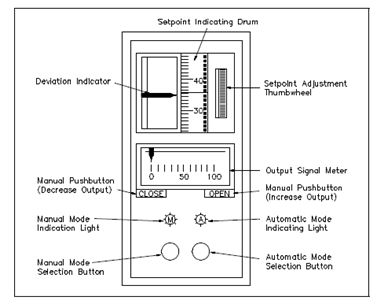Self-Balancing Control Stations:
The self-balancing M-A control station displays in Figure has various controls and indicators which are basically the similar as those displays on the M-A control station in Figure. Therefore, there are a few that differ. Further, the controller does not need a balancing procedure prior to shifting from one mode (manual or automatic) to another.

Figure: Self-Balancing Control Station
Self-balancing defines a control station in that the non-operating mode outcome signal follows (tracks) the operating mode output signal. While the control station is in the automatic mode, the manual outcome signal will follow the automatic output signal. At once the controller is transferred to the manual mode; the outcome signal will remain at its past value until one of the manual push buttons (elaborates below) is depressed. After that, the output will vary. While the controller is in manual mode, the automatic output signal will track the manual output signal. At one the controller is transferred from the manual to automatic mode, the automatic output signal will initially remain at the manual mode value. The automatic output signal would change slowly and return the controlled variable to setpoint if a deviation did exist in the manual mode.